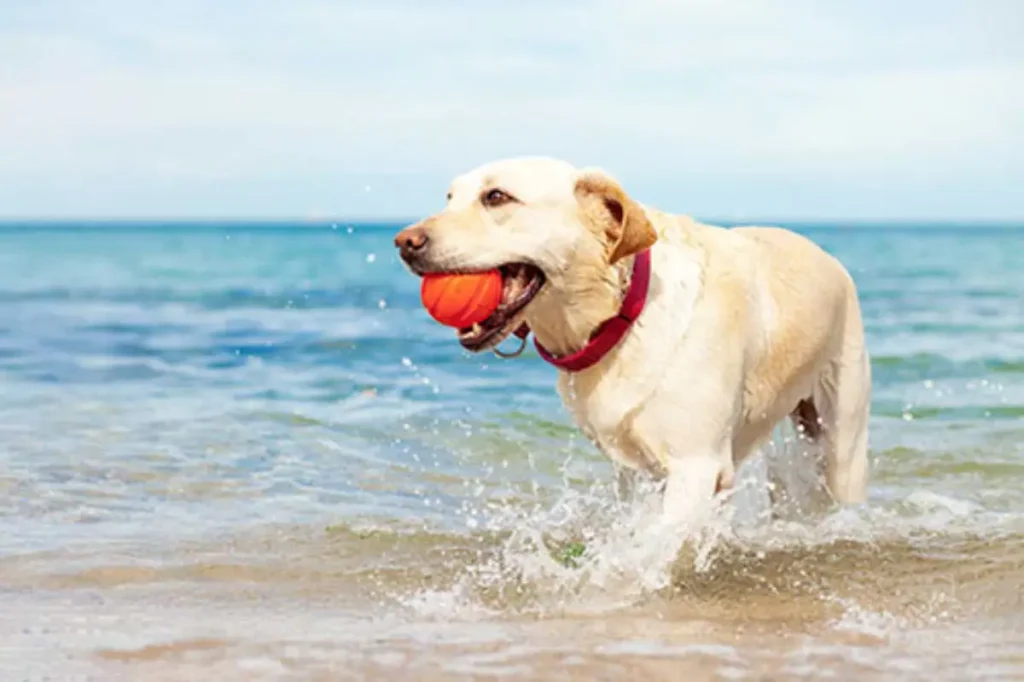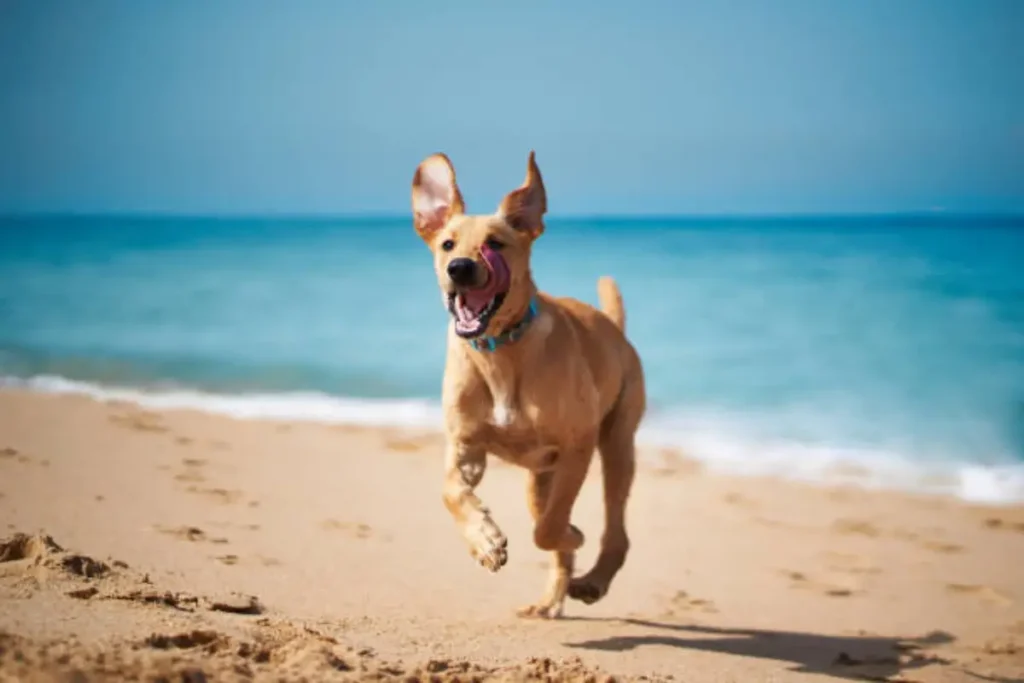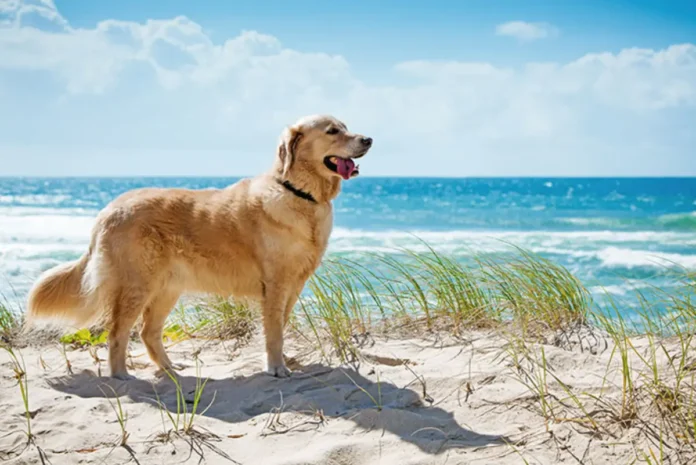If you own a pet owner, you can plan a beach trip with your puppy trends. It’s a great place to enjoy with your dog. There is a long hot heat, out of the sun, and ready for a fun day on the beach with the puppy. However, “dogs on the beach” are a piece to write to detect dogs on the beach and find the best dog -friendly beaches. Therefore, if you are planning to visit the beach to spend quality time with the puppy, you can prioritize safety rules. These beach trips provide many opportunities for the quality time for the treasures used on the beach, swim in the sea and the puppy on the beach. There are 10 safety tips for you while keeping your dog safe on the beach.
Can I take the puppy to the beach? Of course, it is time to make the puppy familiar with divers on the beach, seawater and sea. However, take care of any safety rules on pets on the beach and hold your dog on a lease. In hot weather, it should be ensured that they have access to the shade to avoid overheating and provide fresh water to drink.
Choosing the Right Beach for Your Dog
When you arrange the day of the beach with your dog, you must first make sure the beach is dog -friendly and undergo a specific lease. Some beaches have specified off-lit regions or prohibited at a particular time. Therefore, check these specific beaches in your area and select the correct destination for seizures. To ensure a good experience, go first to the beach without your dog. In this way, you can check hygiene and safety, evaluate crowds and consider available facilities such as covered areas and waste waste stations. However, you will spend a stress -free day with the puppy after choosing the right beach.

Monitoring Dog’s Swimming Ability And Avoiding Beach Hazards
Look at the dog’s swimming skills carefully to ensure both your joy and safety on the beach. Let your dog first detect cool, shallow water and how they do before they go to deep or more difficult areas. If you notice signs of fatigue or stress such as fast or irregular breathing while your dog is floating, you must be prepared to help pets. However, you need to be careful with the objects that can hit you, such as sharp stones, strong currents and unexpected waves.
In warm weather, warm sand protects the claws from burning warm sand. Toxins that broken glasses and metals can damage the puppy claws and damage them. Therefore, initial caution can protect your pets from any danger. Mini Labradoodles loves water like many labradoods, and they like to swim and squirt around the beach.
Exercise tips for a beach -friendly dog
If you are planning to enjoy on the beach with the puppy, make sure your dog is comfortable with water. The best way is to prepare your pet for the best beach training for dogs and other beach animals. Follow these steps to make your puppy coast friendly puppy:

- Present your dog in the beach environment
- Use positive reinforcement to reward calm behavior
- “Come,” Sit “and” Stay “requires proper socialization training with recall commands
- Don’t let the puppy lie without strap
- Don’t eat them seaweed
- Prevent sealing from chasing or reaching other beaches
- Don’t let them drink salt water
- Gradually introduce them to shallow areas
- Use pet -proof sunscreen to protect your dog’s skin from sunburn
- Provide puppy -protecting boots to protect against burning sand
Keeping Your Dog Hydrated and Cool
How to keep dogs cool on the beach? You keep your dog cool and hydrated on the beach by providing a lot of shade and fresh water. It is better to bring a huge umbrella or canopy to protect the sun, the cooling pads placed in the cooler with ice pack, will help you cool your pet. As a protector of a pet, give cold water regularly to your dog and maintain the water bowl in a shaded place.
As much as possible, keep your dog away from the beach during the hottest parts of the day and give them a break to relax.This is necessary to call a veterinarian for further help, and guarantee that your dog has a comfortable and safe beach day with these steps.
- Keep fresh water readily available
- Provide ample shade
- Provide ample opportunity to rest
- Provide fruit that will hydrate the pup like watermelon
Beach Games and Activities for Dogs At The Beach
There are many good things to do on the beach that will traditionally make a strong bond with your pet by walking on the edge. The beach is a nice place for sports and activities with the puppy. You need to engage them for physical activities such as running, and long walking and looking for new places and smells. Another good idea, however, is to bring light colored, liquid plates instead of a ball. This makes recovery easier and reduces the risk of swallowing your dog water. If your dog likes to swim, use a liquid there to keep them near the beach and think about using life jacket for extra safety.
If you are ready for an adventure assignment, a comfortable boat trip with puppy life vest can be fun.
Keep an Eye on your Pet When on the Beach
You should follow your pets to ensure that they have a fun and safe time on the beach. Constant supervision requires, even if your dog is enjoying themselves, especially if they are not wearing a strap. Check if the other dog owners are doing well with loose dogs, and make sure your dog remembers the orders that are relieved. Be careful about potential conflicts with other dogs and see for signs of heat stroke, dehydration or hypothermia when contacting cold water. Check the dog’s claw from time to time for damage caused by the buried objects buried in the sand. If you keep a tight test on them, your dog will be safe and there will be a better time on the beach. However, they prevent them from being lost, eating dangerous things or in danger.
Does your dog swim after the beach?
When you return from the beach trip to, you have to bathe the puppy first. This bathroom after bath will remove sand, salt water and any foreign objects such as small shells or seaweed. The sand will disrupt the skin and cause skin problems such as hot places and rashes that cause the pet for discomfort. These early precautions will prevent skin problems and ensure that the dog’s coat is protected from bacteria. The puppy’s bodies will be affected by harmful bacteria, parasites and toxins spread across the beach. These harmful substances will damage dogs and bathe beach toxins and remove them twice through rinsing.
In addition, use lukewarm water to remove sand and a soft dog shampoo to clean them. After going home, take them more bathrooms and quickly and be sure to flush completely to avoid relic. If you have sensitive skin in your pets, salt water on the beach will create a great mess and lead severe itching. Overall, a quick and easy bathroom will give your puppy a fresh smell.
Be careful against heat stroke
Dogs are exposed to skin cancer and have sunburn as humans, especially if they have light skin, short fur or thin coats. Since the dog’s ears and nose are most prone to sun damage, you must shape them by damaging UV radiation. If possible, use pet-specific sunscreen, or prepare your dog in a UV-protective sun skirt. Plan to perform your beach after dark, preferably between 10.00 and 17.00. 10 and 16, when the sun is not so powerful.
While a dog’s fur can shape them with elements, dogs with light coats or people passing through hair loss require special attention. For the best sunscreen for your dog, always see the veterinarian. In addition, you can stay away from using human products, especially those including zinc oxides, which can be dangerous for dogs when consumed. Use sunscreen on the exposed areas with thin fur and pay attention to your veterinary recommendations for safe use.
What The Safety Rules For Dogs on the Beach?

Proper training and understanding of potential dangers are needed to prepare your dog for a safe beach trip. Make sure your dog is properly trained to follow recall signs to avoid wildlife problems and dangerous conditions. To reduce distractions, put untrained pets on Leish and think about going to the beach for a quiet period. Watch out for the sea life that can burn your pet claws, Tadka waves and potentially harmful marine critters as jellyfish. Offer fresh water to avoid dehydration from salt water, and use suitable pet sunscreen to avoid sunburn in small fur areas. You can further soothe the dog’s happiness and safety so that they can follow them to prevent them from eating sand or seaweed.
Set up your dog’s health problems on the beach
As the owner of a pet, in your priority list, it should be known about health problems that must face a beach dog. If you see a sign of the following symptoms, you suddenly need to see your veterinarian and take active action. Many health problems should be considered:
- Heat Stroke
- Dehydration
- Sunburn
- Sand Ingestion
- Saltwater Irritation
- Paw Pad Burns
- Foreign Objects
- Parasites
- Ear Infections
FAQ’S Of Dogs at the Beach
Is it safe to take a dog to the beach?
In general, it is safe to take a dog to the beach, but make sure your dog is comfortable and wonderful to detect new places. However, it is ensured to protect the claws from hot sand, keep them hydrated and swim safely to avoid dangerous waves.
What do dogs like to do on the beach?
However, dogs love the beach and prefer to swim, prefer to detect the edge and play in water. They discover new places around the beach and enjoy sand and surf.
How to secure your dog on the beach?
When you take your pets on the beach trip, the safety equipment should be placed in your picnic bag. Dog jackets, dog shoes, a long strap and sunscreen of pets are safety tools to secure the puppy on the beach.
Conclusion of dogs on the beach
To discuss, the article on the beach is a very informative piece of dog writing. This article actually guides the owners of pets who will enjoy. Hot summer day with your beloved friends on the beach. Therefore, after reading the article, you will gain valuable insight into tips on safety and exercise to increase your pets and create most of your time together. Overall, these beach trips offer many opportunities to relax in sand, swim in the sea and provide the quality of treasures used on the beach with the puppy.


